While most humans are staying at home–and it’s a smart thing to do–the birds of the world are in migratory mode, traveling great distances to find their mates and start their families. It’s bird time and spring migration is well-underway. I’m fortunate that my garden is smack in the middle of the North American bird highway, allowing for a good variety of birds who winter in Central and South America and breed in the northern parts of North America, to wing in for a visit.
The migrants mostly visit my garden for rest, but gobbling some insects and a dip-n-splash in the pond and bird baths are also part of their agendas. Each spring, I welcome back birds that I observe, albeit briefly, once or twice a year. Autumn migration happens too, from August through September, but in my garden, spring is the the primary bird show.
One of my favorite migratory birds is the Lincoln Sparrow, Melospiza lincolnii, who visit in both spring and autumn. Cornell Labs uses the term “dainty” to describe Lincoln Sparrows; I’ve described their coloring as elegant: adults are graceful, painted in subtly marked cream and grey, with highlights of varying shades of brown. Lincolns aren’t flashy, but instead handsome, low-key little birds.
Lincoln Sparrows hop along the ground and through the shrubs foraging for insects. They’re quite shy and secretive, therefore difficult to observe, as any movement sends them aloft to safety. I get my best views when they’re at the pond; they especially enjoy the bog.
According to Cornell’s All About Birds website, the Lincoln Sparrows breed in far north Canada, with their migratory routes in the northern and Midwestern parts of the U. S. Texas is included as the ‘non-breeding’ area, though the only time I see them is during the two migratory seasons. I’m glad to welcome them to the garden whenever they like.
Another common, mostly spring, migrant in my garden, is the Nashville Warbler, Leiothlypis ruficapilla. Grey and yellow with a ring of white around their eyes and perfectly round heads, they’re cute, petite birds. See the little smudge at the top of this fella’s head? That’s the blush of brown that signifies he’s a he. Typically, the brown patch is hard to see. I usually don’t notice it, even with binoculars, until I download a photo.
He’s showing off his good side,
…and staring (or is it glaring?) at the camera.
As a species, I see more individual Nashville Warblers than any other migratory bird. Instead of just one, once-in-a-while, for a few weeks, it’s not unusual for me to see two, three, and even four, hanging out together, traipsing down the rocks for a dip. They’re not great at social distancing.
Most Nashville Warblers migrate along the coastal regions, but they have migratory routes through almost all of Texas. Yay for Texas birders!! The Nashville Warbler isn’t more common in Nashville than in other place. They’re so named because the species was first observed–then named–in Nashville, Tennessee by Alexander Wilson in 1811. Just to make things complicated, there’s also a Tennessee Warbler, Leiothlypis peregrina, which has also come through my garden recently, but I couldn’t get a photo. Or, at least not one that was anything but a blur.
Everyone wants to catch a peek of a Painted Bunting, Passerina ciris, and it’s obvious why.
Considered one of the most beautiful, if not the most beautiful, bird in North America, All About Birds describes Painted Buntings as birds that “…seem to have flown straight out of a child’s coloring book.” The males are stunning: brightly colored and wildly patterned, and the females, while dull in comparison, are pretty great looking too, despite the lack of color pizzazz. I’ve enjoyed several visits from one, or a couple of visits from several–I’m not certain which. Most of my Bunting sightings were miss-it-if-you-blink glimpses, but I was tickled to watch this one bathe for a while in one of my bird baths that sports a little pump which bubbles water.
The female who visited was skittish; I saw her twice, only briefly. I’ve typically seen more Buntings in May, so there’s still a good chance that more will come through. Besides bathing their gorgeous selves, I’ve seen Painted Buntings nibble at the seeds of the native Mexican Feather grass, Nassella tenuissima, and at the seeds one of the early spring-blooming perennials, Lyreleaf sage, Salvia lyrata. There’s a lesson: if you plant native, the birds will come.
I think the bird charm prize must be awarded to this female Summer Tanager, Piranga rubra. The Summer Tanagers, usually one mature male, a female and one or two juveniles, show up at the end of April for a couple of weeks. It isn’t the pond which draws them, nor is it the native plants that they hunger for. So why do these bird hang out in my back garden? For the honeybees!
Summer Tanagers are adept hunters of bees and wasps, catching the insect treats in the air and eating them in trees, or sometimes, on the rooftop of a defunct beehive.
While the photo isn’t particularly clear, as I watched, she definitely snagged a bee. The bee is most likely from the hive named Woody, which resides to the left, just out of frame, but Ms. Bee-hunter plopped down on top of poor Buzz to snarf the snack. Tanagers beat their bee snacks on a branch (or rooftop) then rub the bee on a surface until the stinger falls out. Then gulp–and yum! It’s a sting-free meal!
This female tanager has been in the back garden most mornings for a week or so and a joy to watch.
She’s alighted on the black-oiled sunflower feeder several times. I love the disgusted look on her face as she must be thinking: I’m not gonna eat this. Do other birds actually eat this junk?
True to form, as she perched on the feeder, she kept a keen eye out for flying insects, ready for action when one became available.
Compared to the bright red male she’s not as colorful. But her intelligence is obvious and she’s also a pretty, pretty bird.
I observed a mature male once early in the migration season, but he was gone in a flash. An immature male has also been hunting bees, alongside the female.
That seems to be a pattern: in late April, I’ll see a mature male; maybe he hangs around, maybe not. Then I observe both a mature female and an immature male, both hunting in my back garden for a week or two–then, they’re gone. Central Texas is Summer Tanager breeding ground, but I only ever see them from late April and into early May. They’re welcome to hang out though, as I always have a supply of bees.
The juvenile males are showy, even with their undecided coloring–splotches of red here, dabs of yellow there. But like their elders, observing their keen hunting skills is a treat–and a privilege.
This little dab of sunshine zoomed around the garden, landed in a tree and then proceeded to give me the stink eye. A male Yellow Warbler, Setophaga petechia, I typically have a gaggle of males and females show up in spring, flit around the pond for a few days, then move on to parts unknown.
It’s not a very good shot of this lovely, tiny bird; I’m including it just in case it’s the only one I see this season. He’s a pure yellow, with burnished streaking throughout the breast. The females are also yellow, though in a muted hue, and lack the breast streaking. Both have adorable faces. All of Texas is in their migratory path and north of Texas, they breed throughout a huge swath of North America. I hope to see more of them in the next few weeks.
A different yellow caught my attention one evening, near sundown. Again, it’s not a great shot, but I’ve never seen a Blue-winged Warbler, Vermivora cyanoptera before.
I don’t think the bird was in my back garden for more than a minute and I feel fortunate that I grabbed the camera and snapped the shot. Considered a rare bird for Central Texas, there are occasional sightings of Blue-winged Warblers during migration season. Blue-winged Warblers migrate through the eastern half of Texas and breed in the upper Eastern/Midwestern areas of the U.S. I think this one is a female, as she lacks the dramatic black eye mask of the male and had less white on her wing-bar.
A rarer bird for Central Texas also appeared in my garden a few days later. It wasn’t in the garden for long and certainly didn’t stay still at all, but this Golden-winged Warbler, Vermivora chrysoptera, provided some excitement for me.
With a quick perusal of Cornell’s site, I assumed this one was a female. As it happens, Golden-winged Warblers and Blue-winged Warblers interbreed and hybridize, creating varying color combos. Originally, ornithologists thought that the hybrids were separate species, but now think differently. I believe this one is a “Brewster’s” which sports a white throat and more gray coloring. A different hybrid (“Lawrence’s Warbler”) tends more yellow.
I’m especially honored to have observed this little beauty, even for just a few moments, as it’s a bird which has endured one of the greatest population declines of all songbirds. The largest population is in Minnesota, and Cornell Lab of Ornithology, along with an organization called the Golden-winged Warbler Working Group, have developed a conservation plan to grow the population. I hope it succeeds. Golden-winged Warblers breed in the same region (Great Lakes) as Blue-winged Warblers, though in a much smaller area.
It feels like there haven’t been as many birds coming through my garden this past month, but May is usually the primary migration month, at least for my garden. That said, I’m thrilled with the two rare bird sightings and grateful that my garden provides some safety and respite for these remarkable creatures.
If you’re interested, Cornell Lab sponsors Global Big Day, this upcoming Saturday, May 9, 2020. The purpose is to observe and celebrate the birds around you–wherever you may be. Birders big and small, expert or novice, gather in their spaces (social distancing, of course–that’s the birding way) and report the birds observed. It only requires a few minutes of time, or you can watch on-and-off during the day. Once the data is in (either through e-bird, or by email) it’s a fascinating look and a quick snapshot at what birds are where, all around the world. Check out the link above if you’re want to participate–it’s easy, fun, and educational.
You never know who might see in your garden.
Today is Wildlife Wednesday and if you’re so inclined, share your wildlife happenings here. Also, it’s Wednesday Vignette, so I’m also linking with Anna at Flutter and Hum. Check out her site for gardening stories of all kinds.
Happy wildlife gardening!

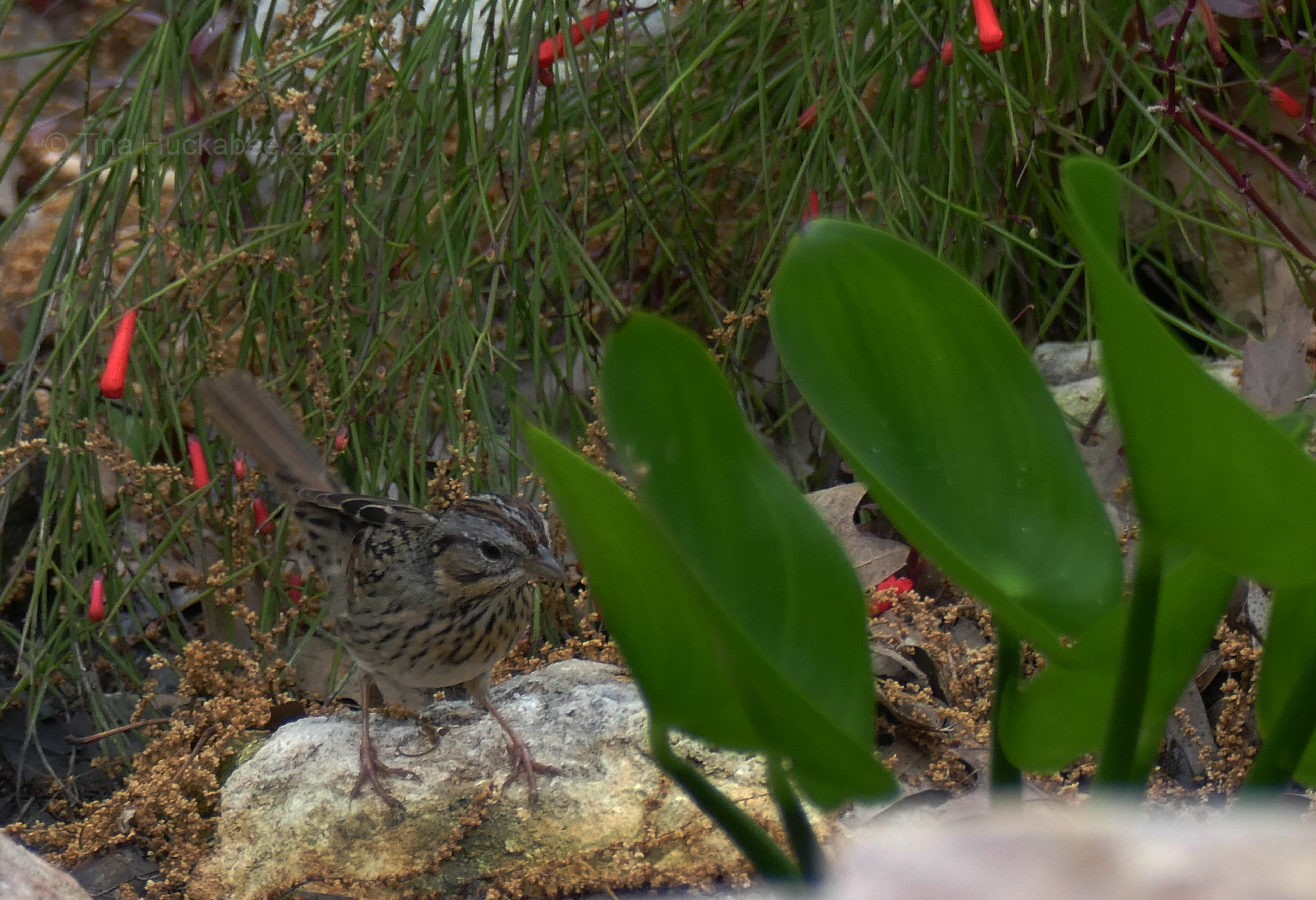
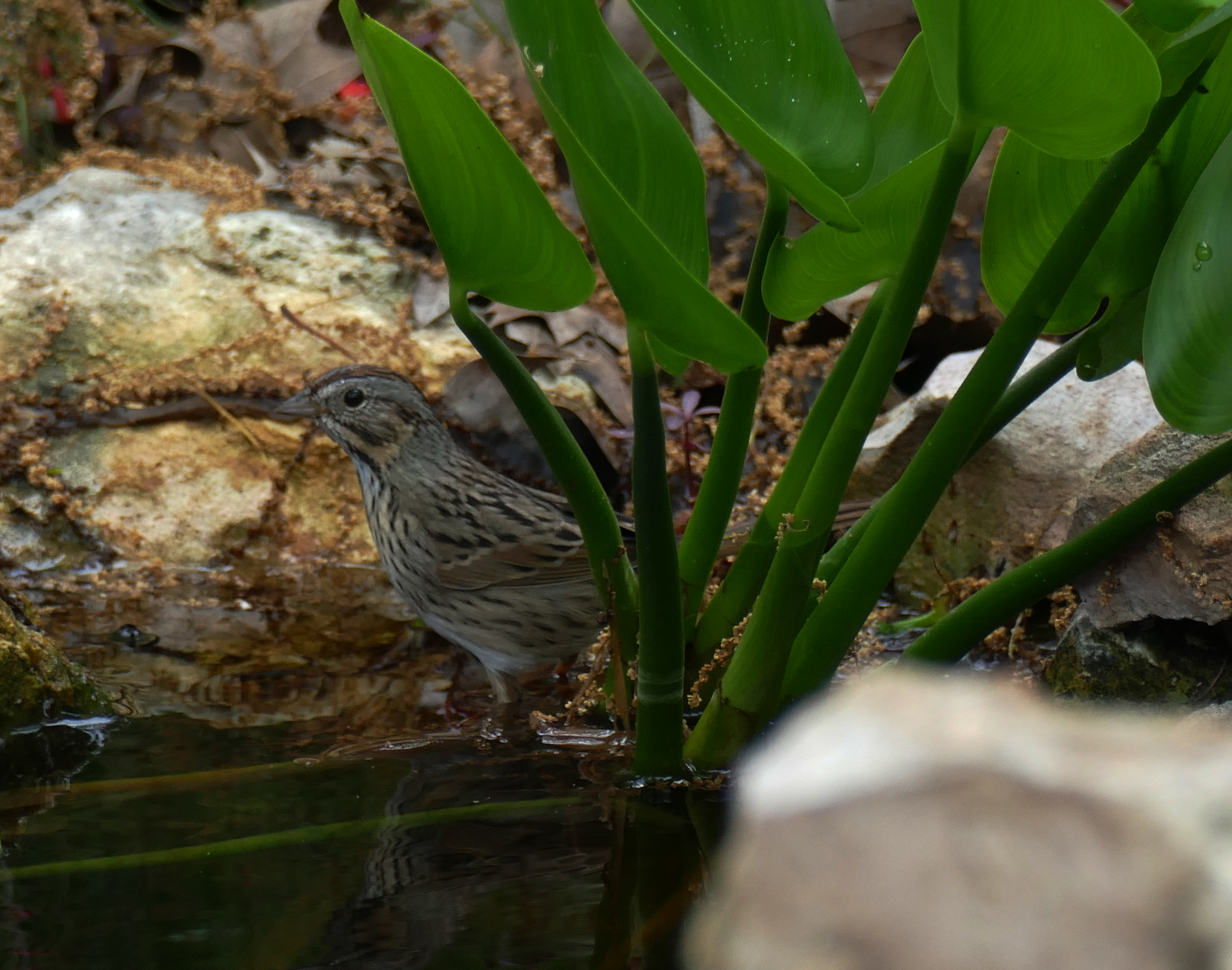
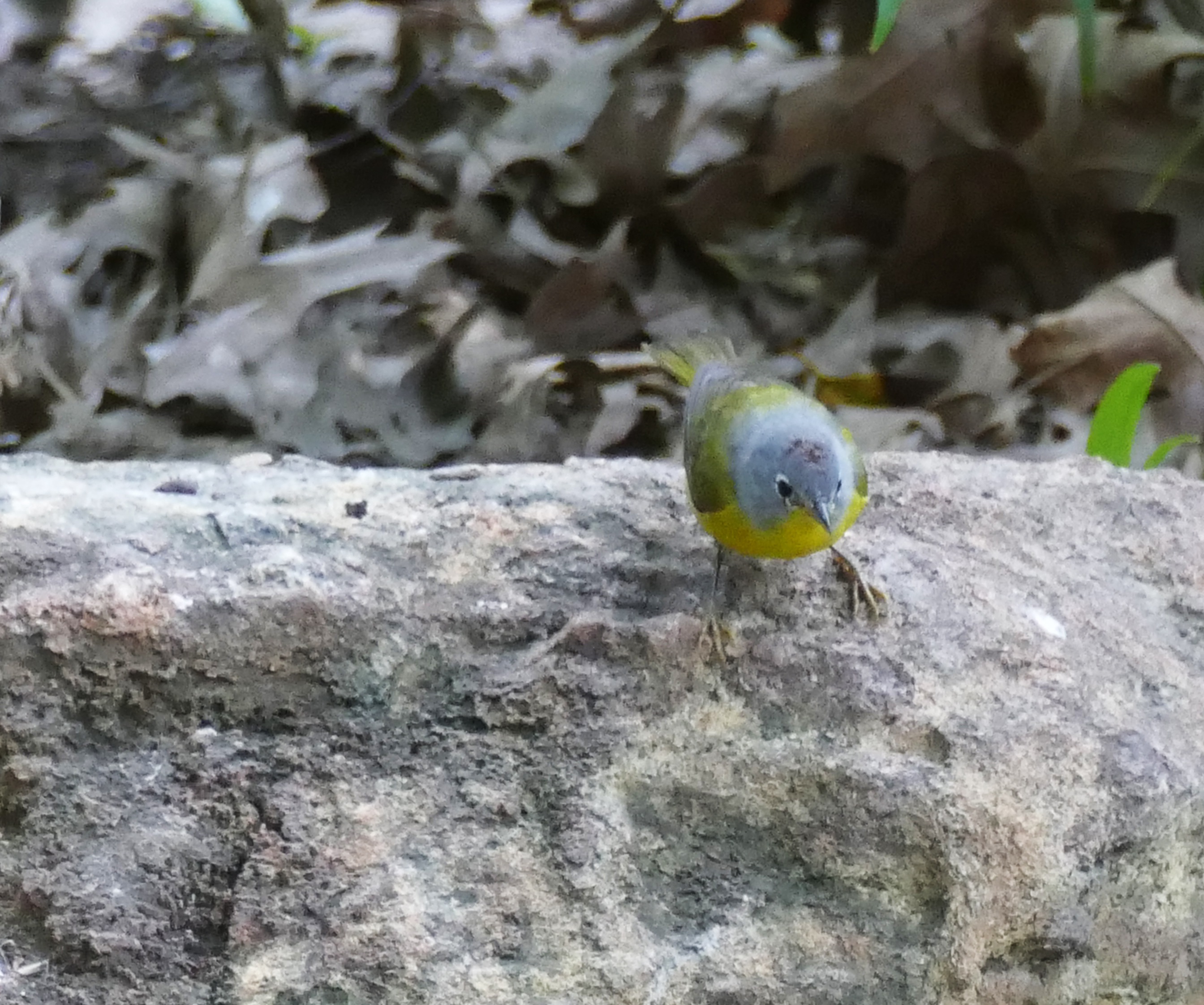
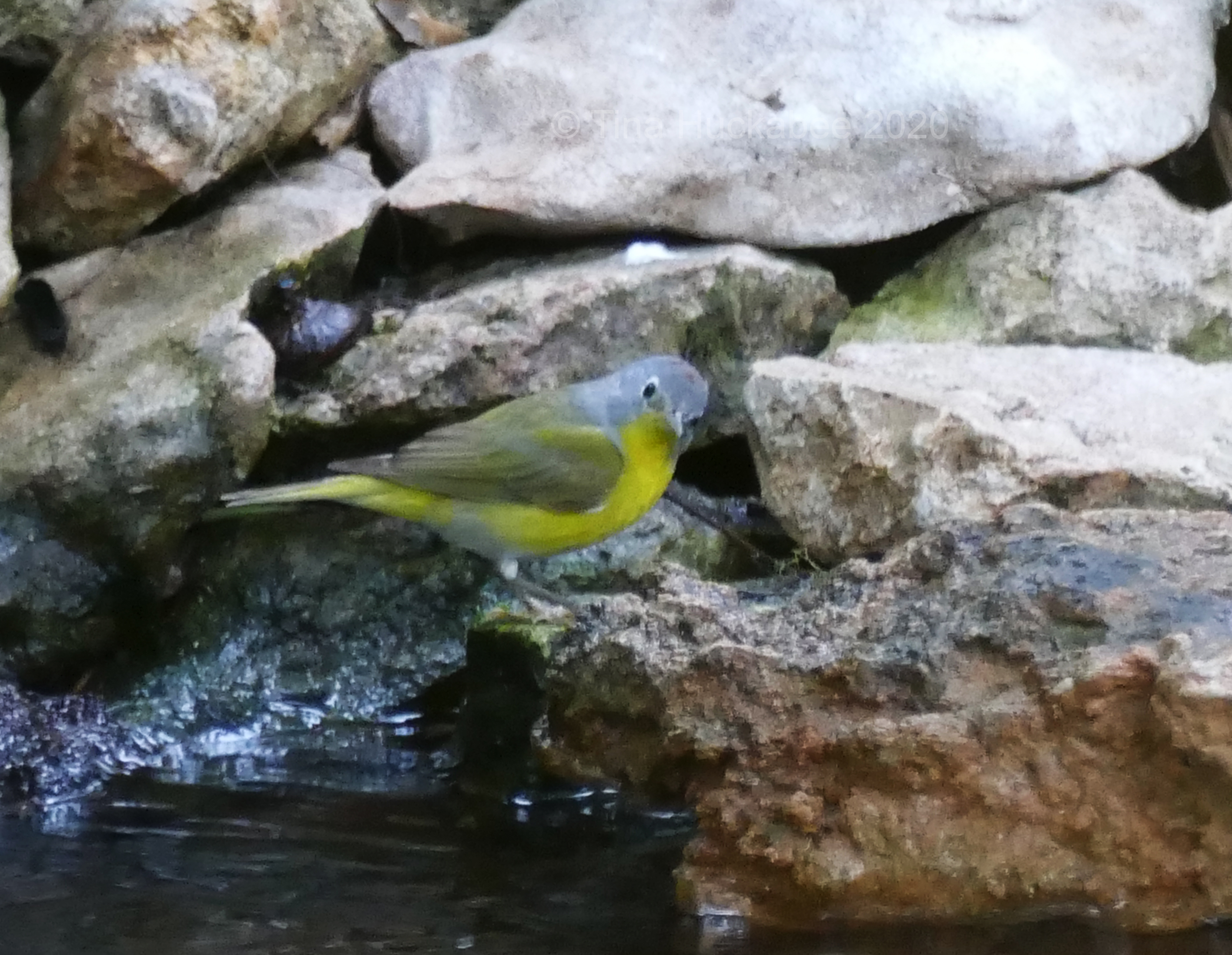
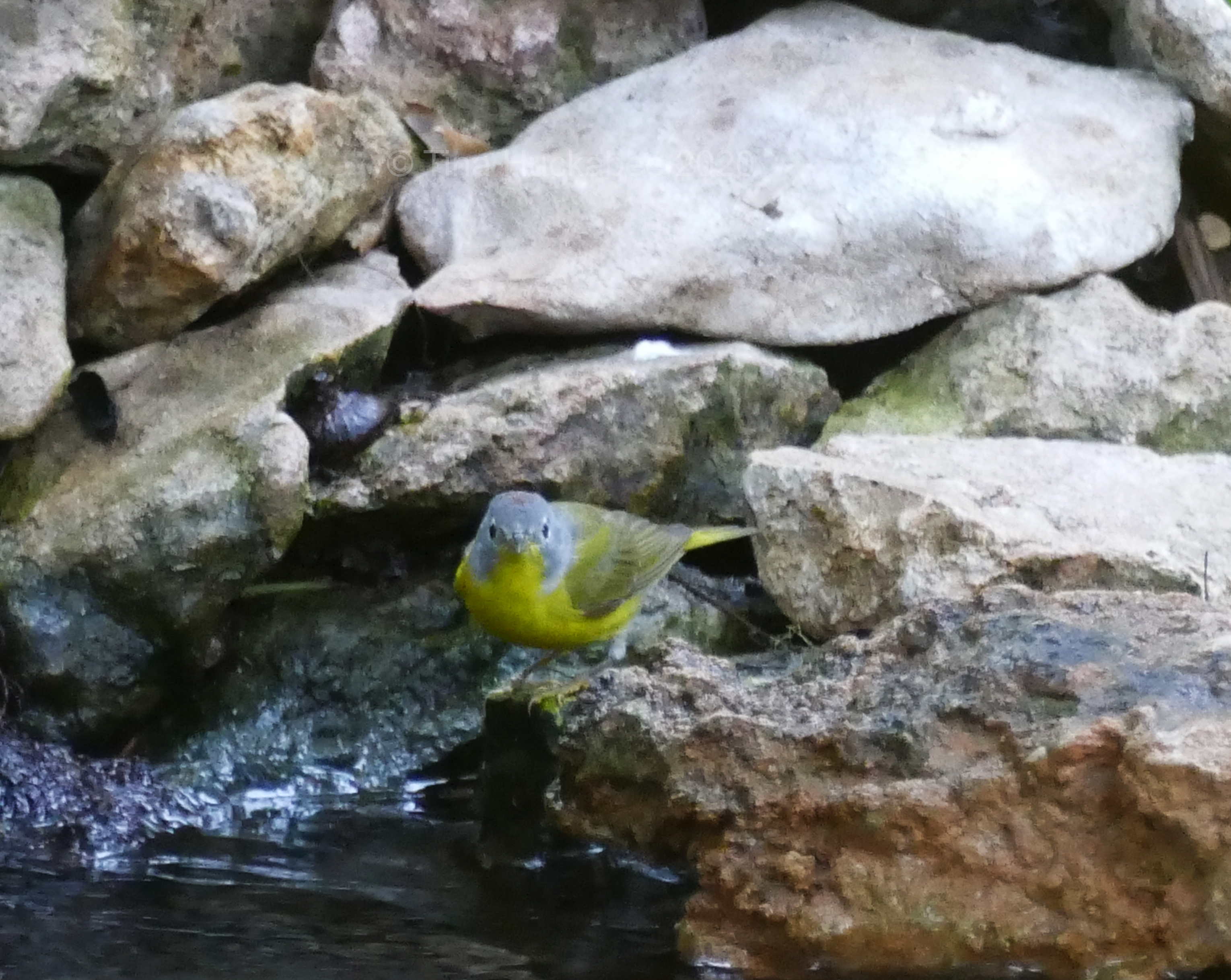
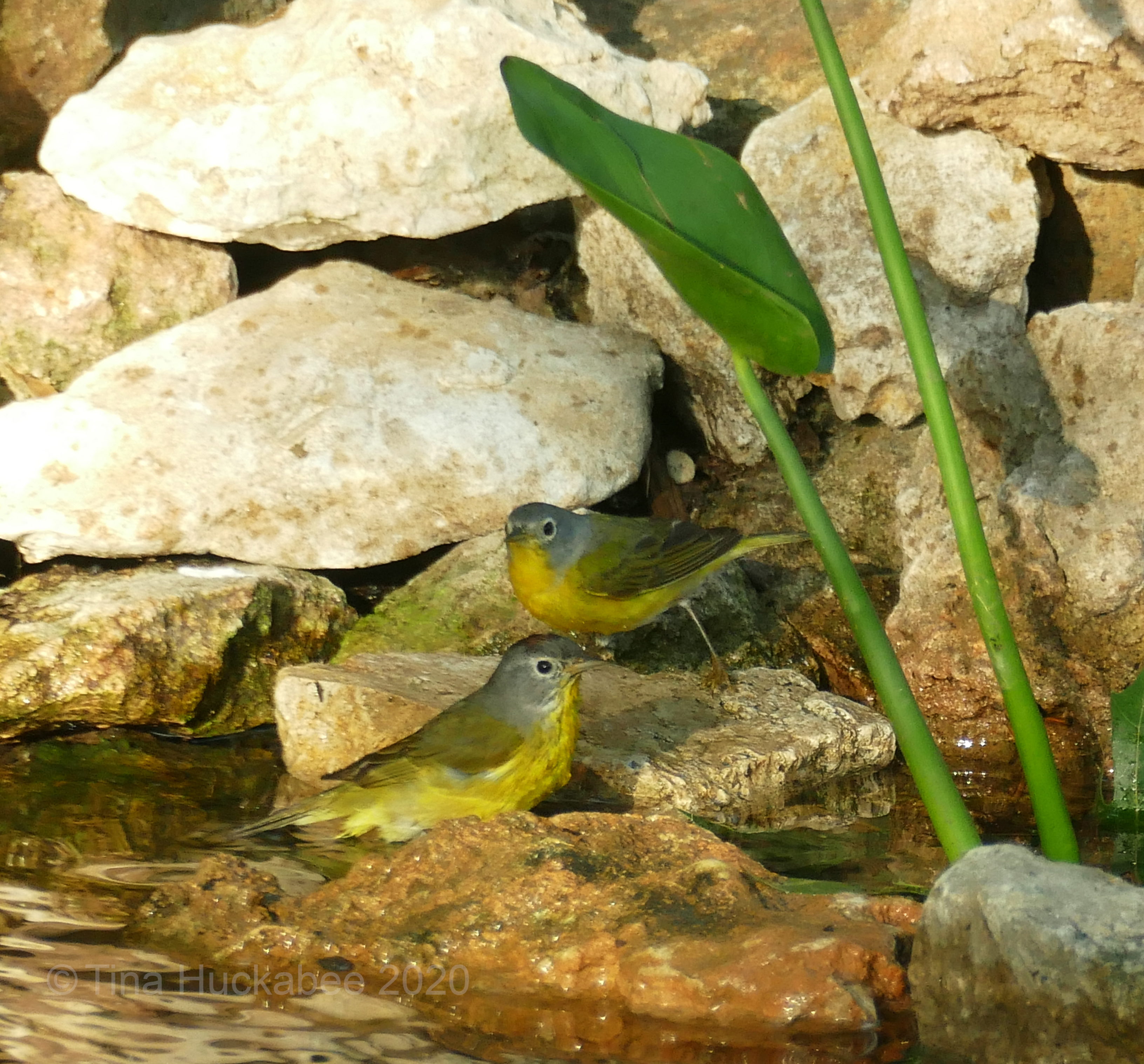
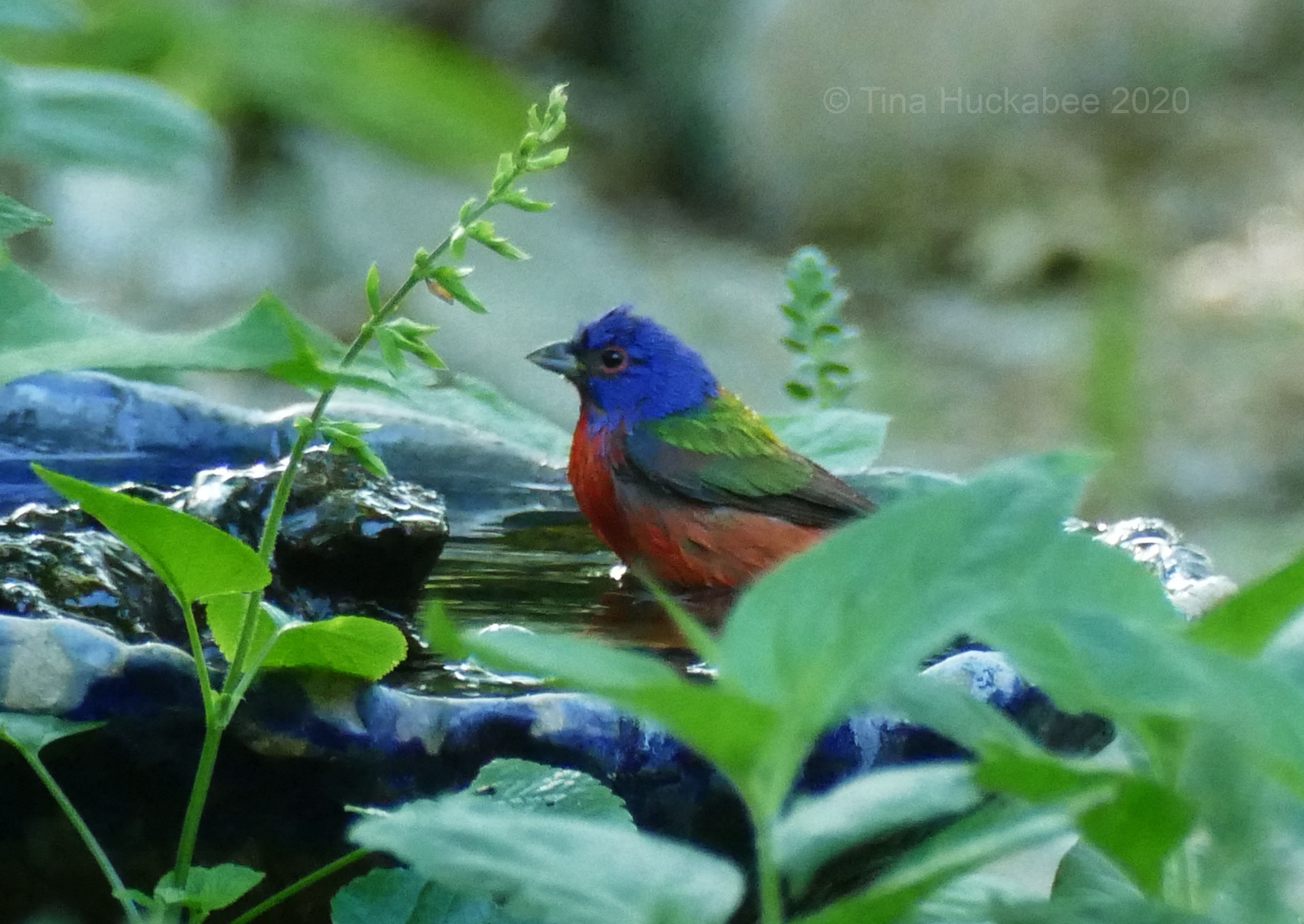
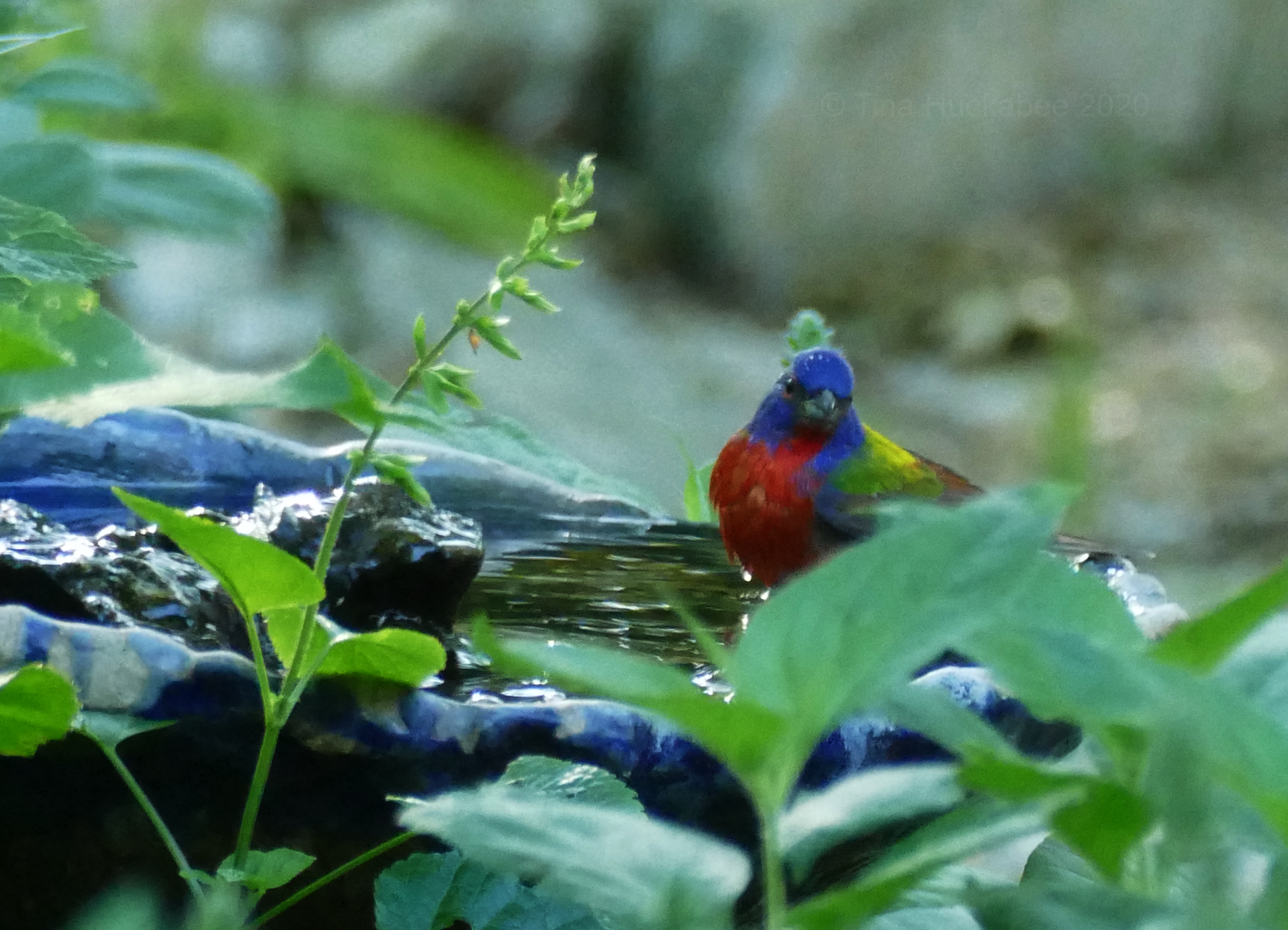
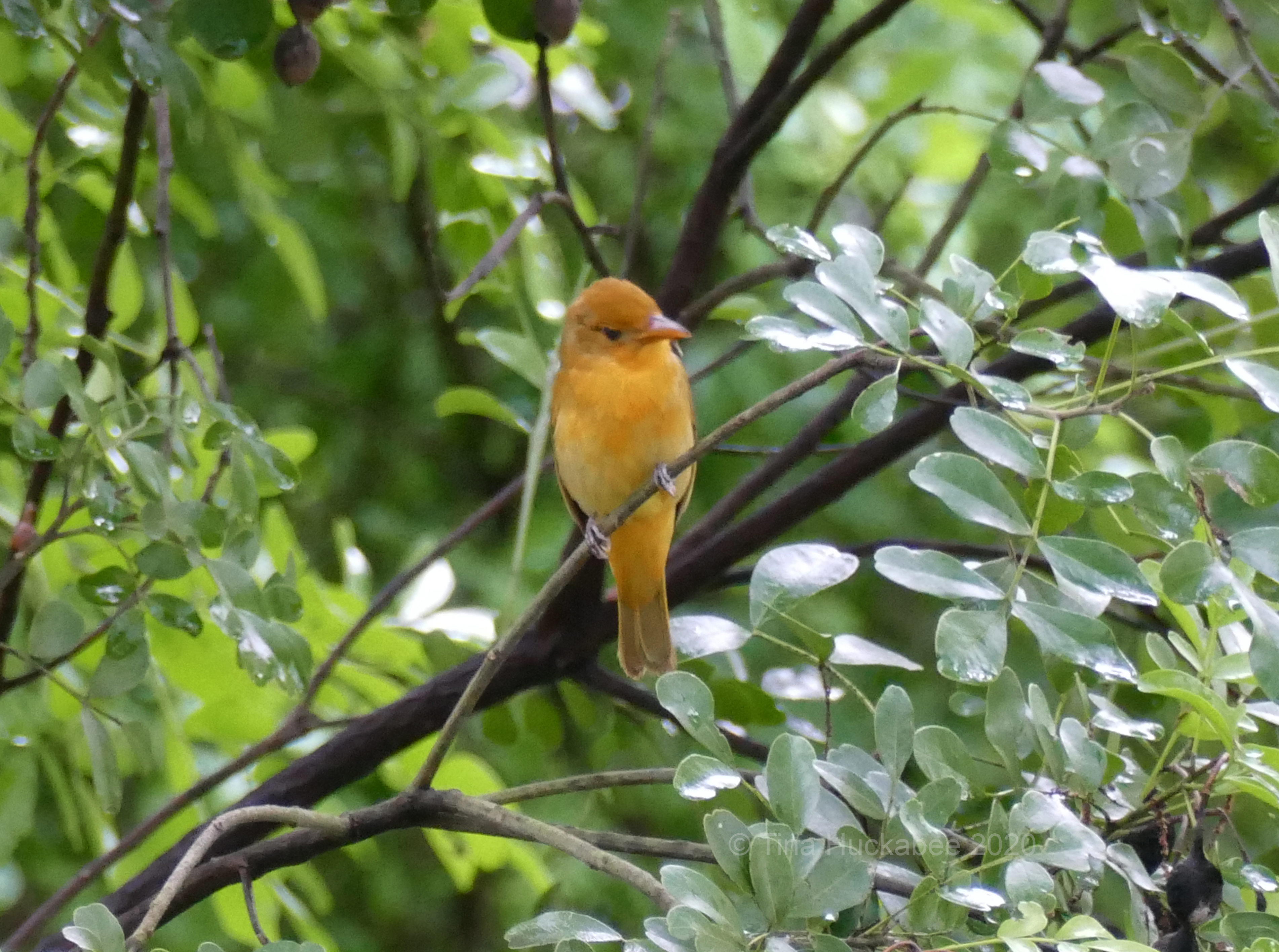
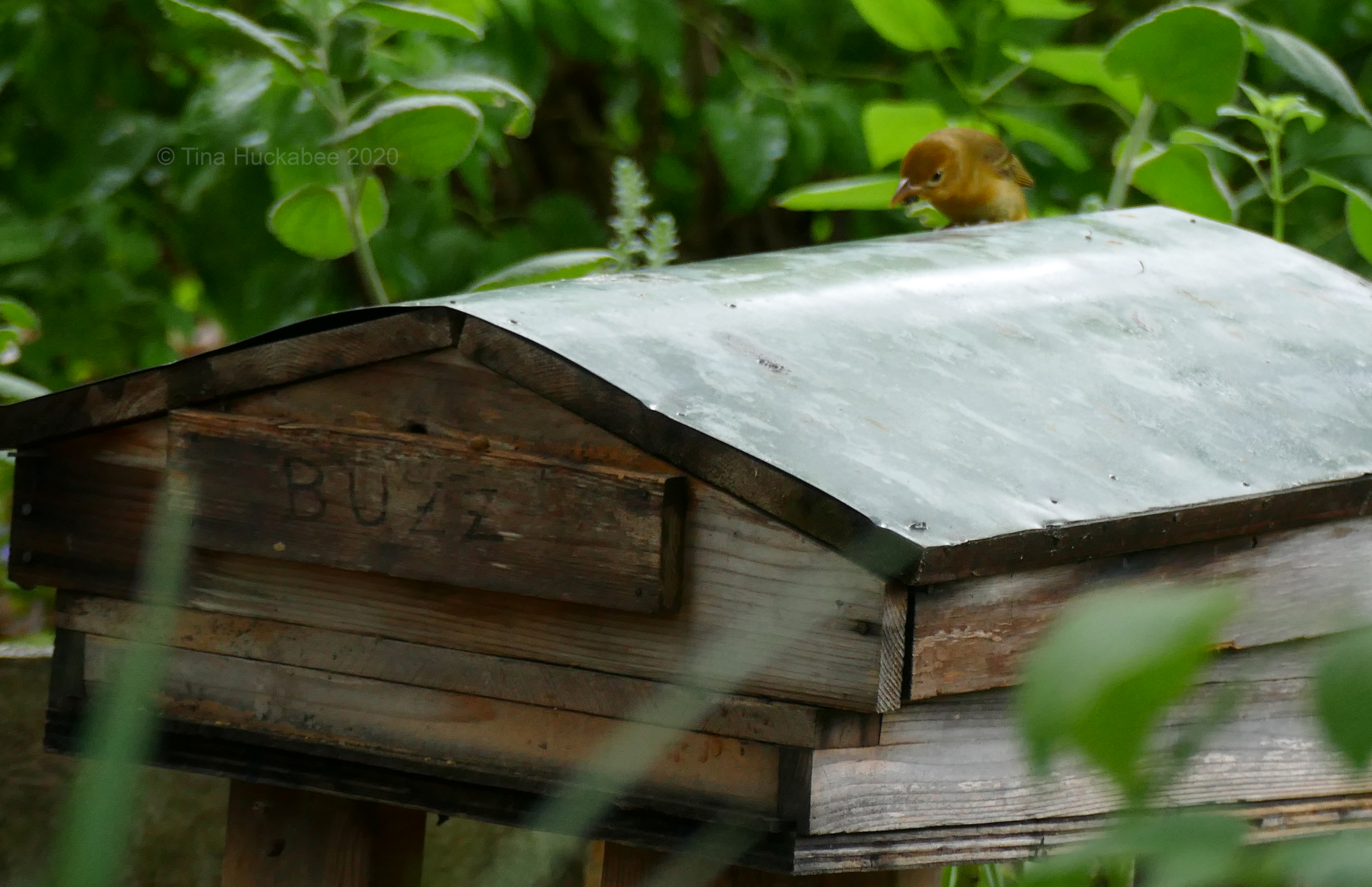
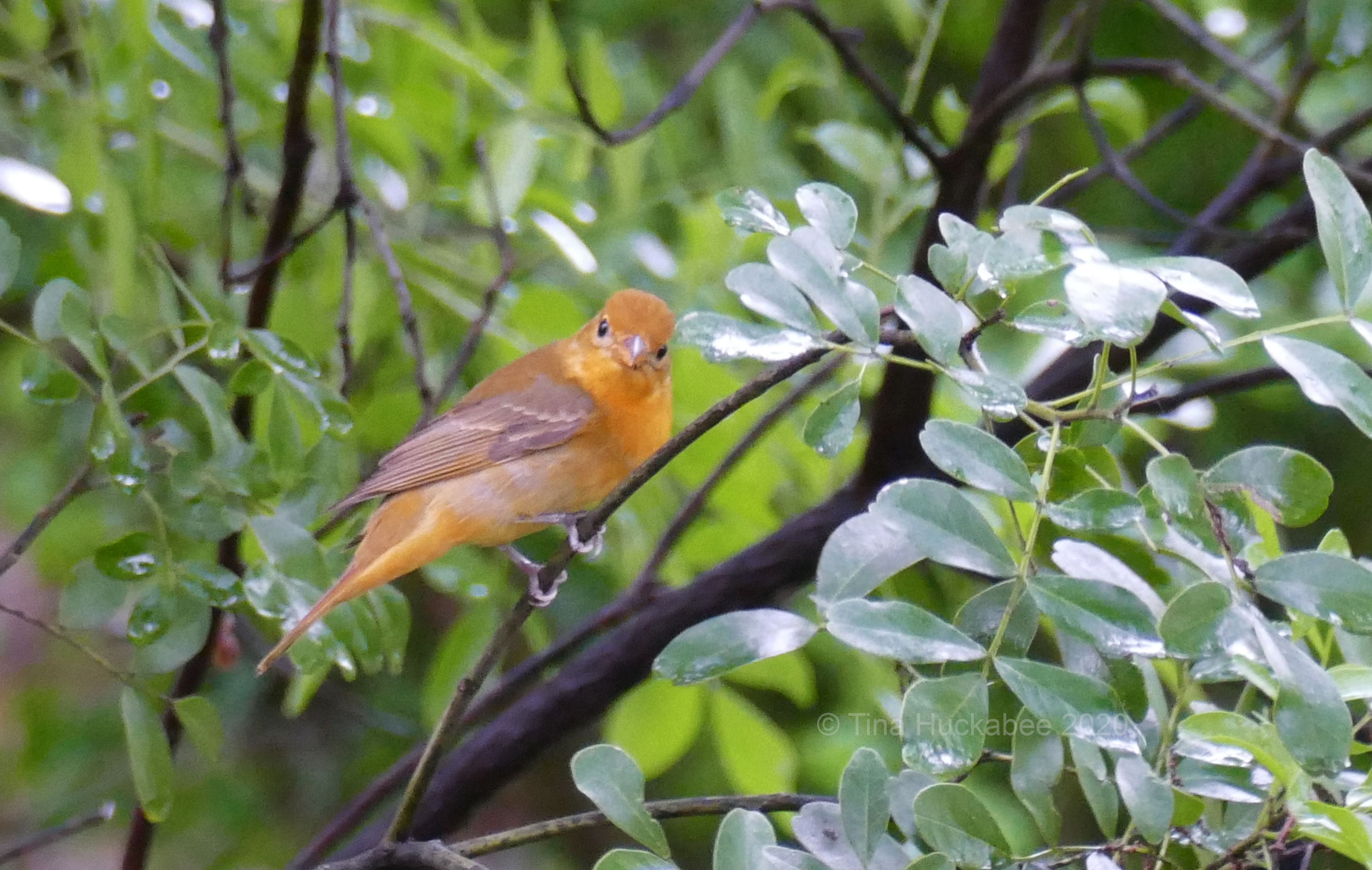
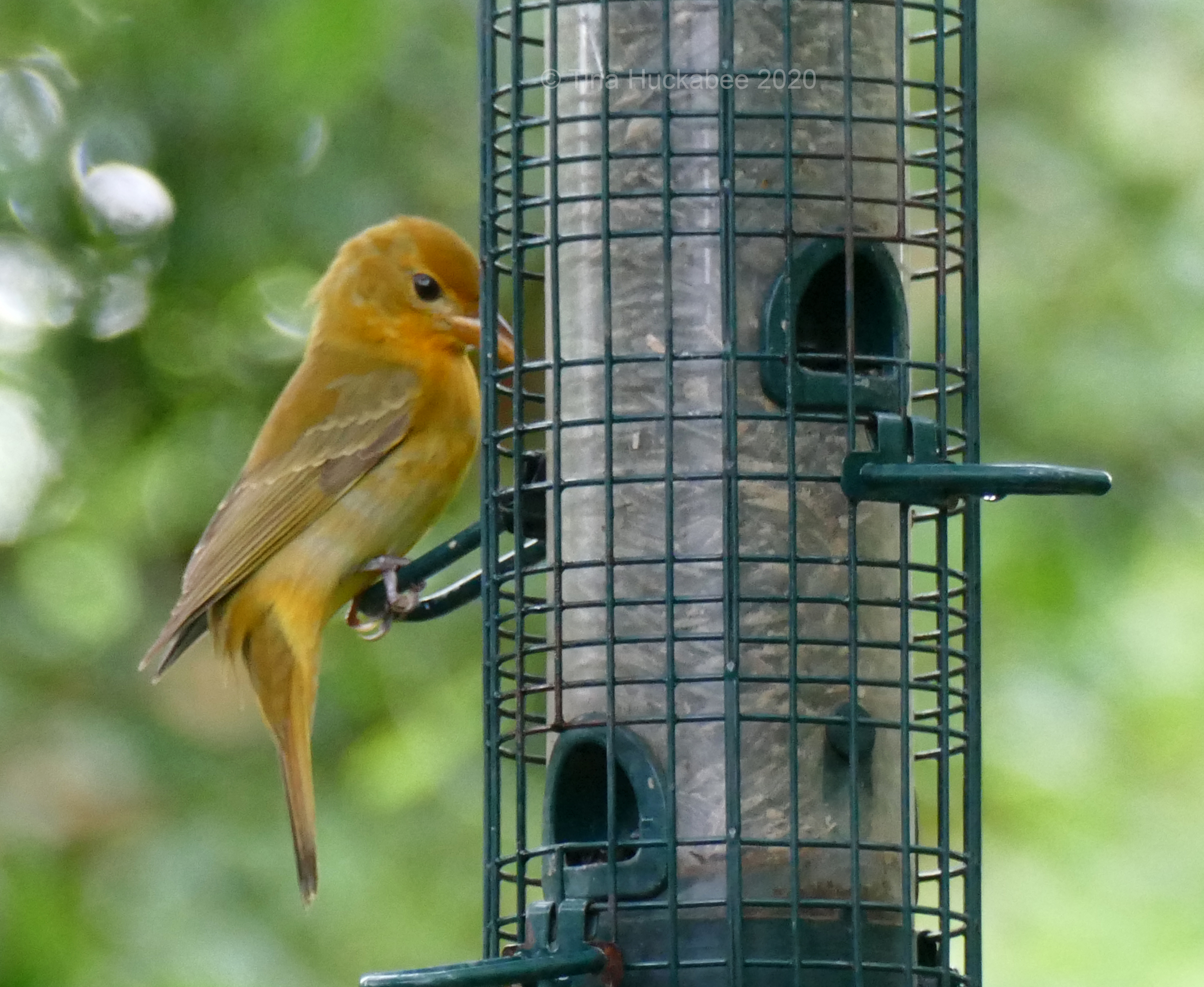
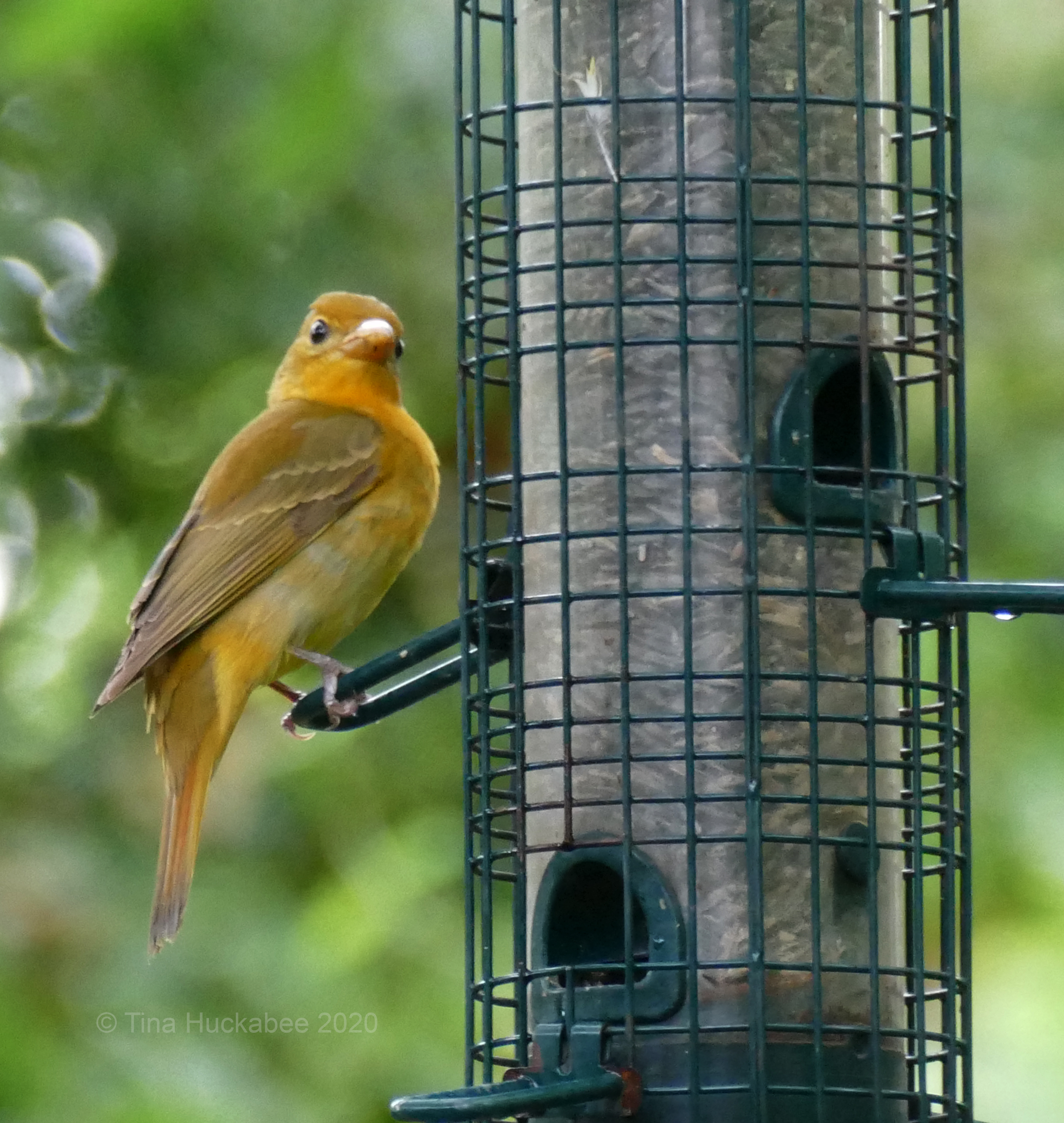
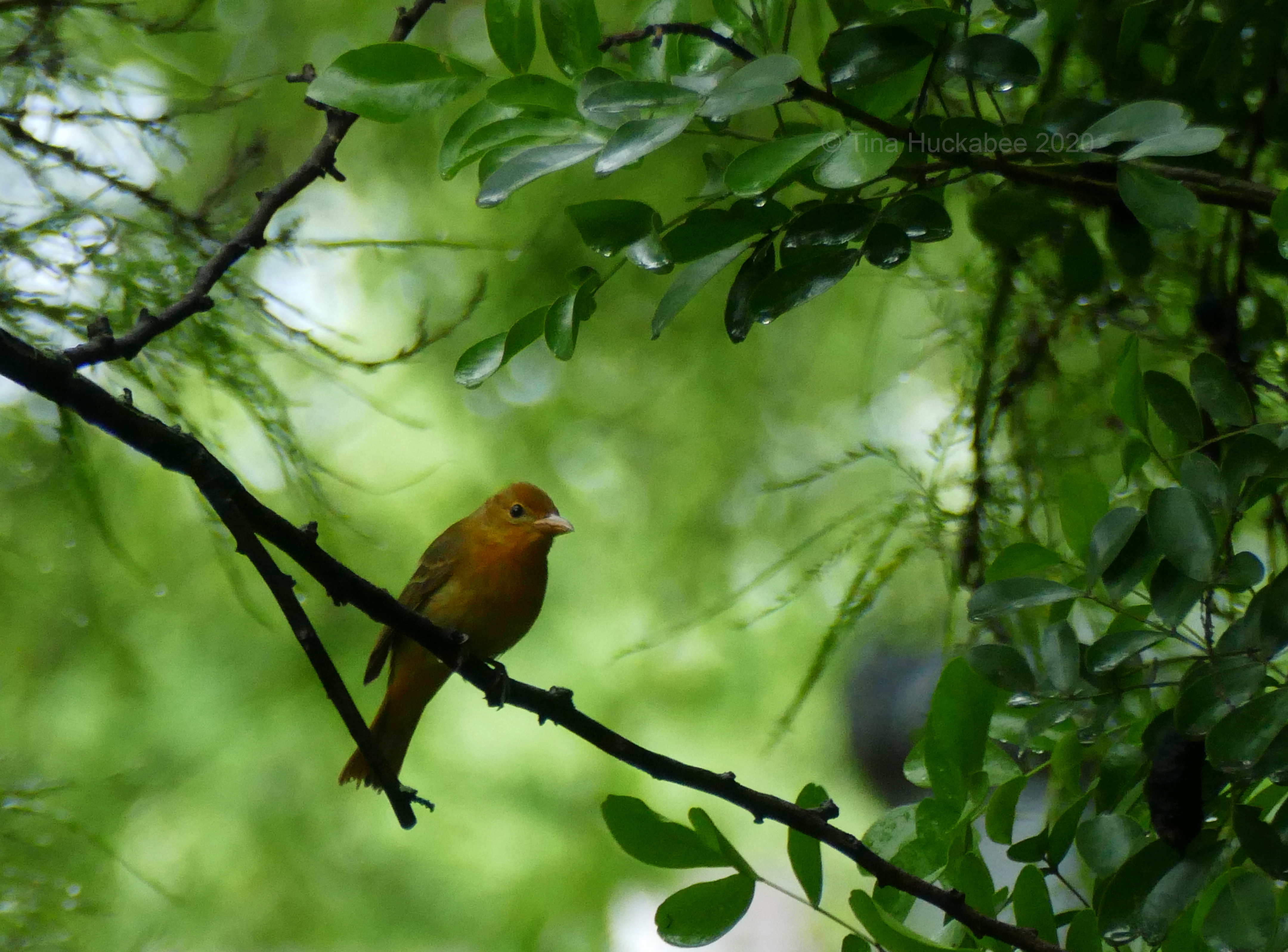
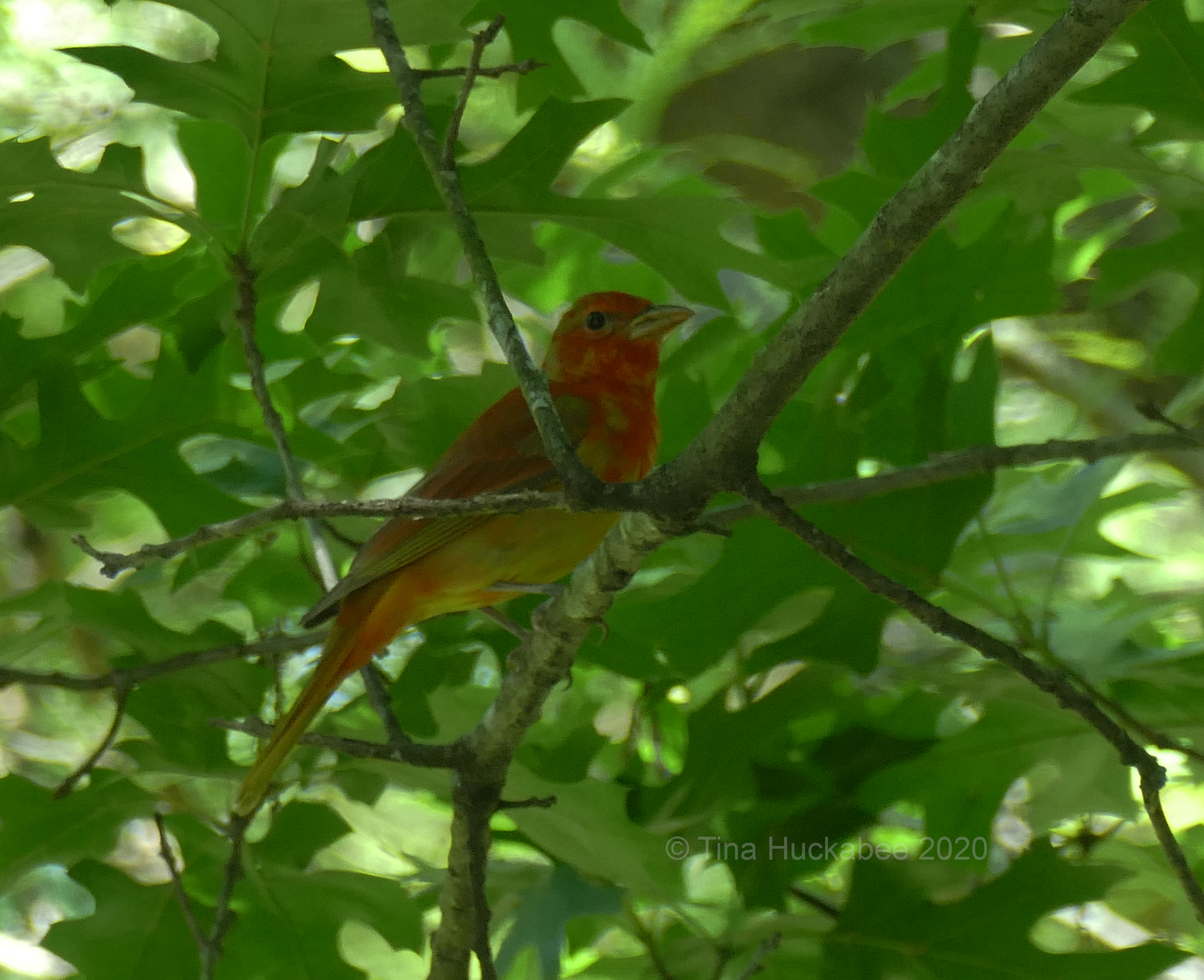
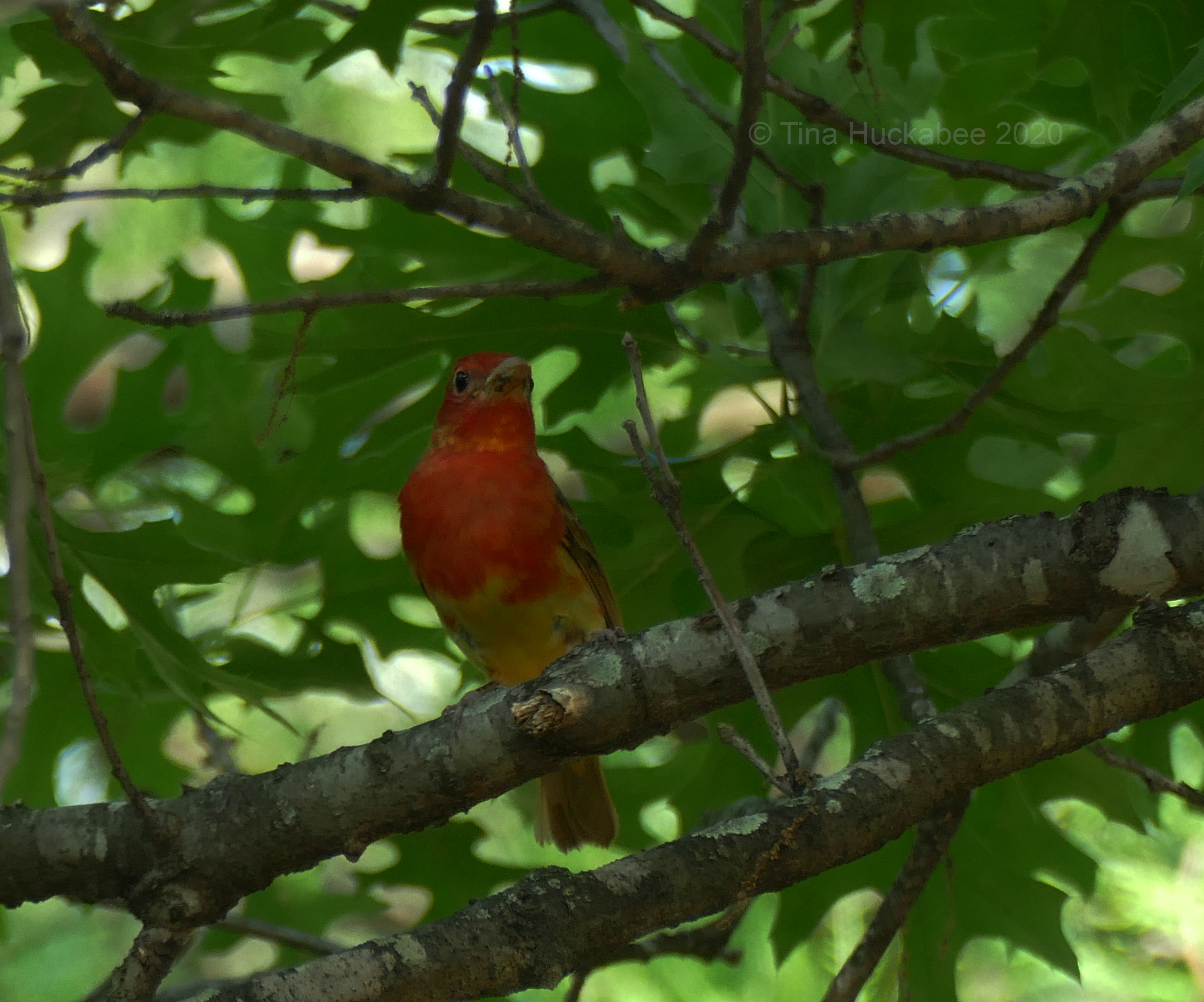
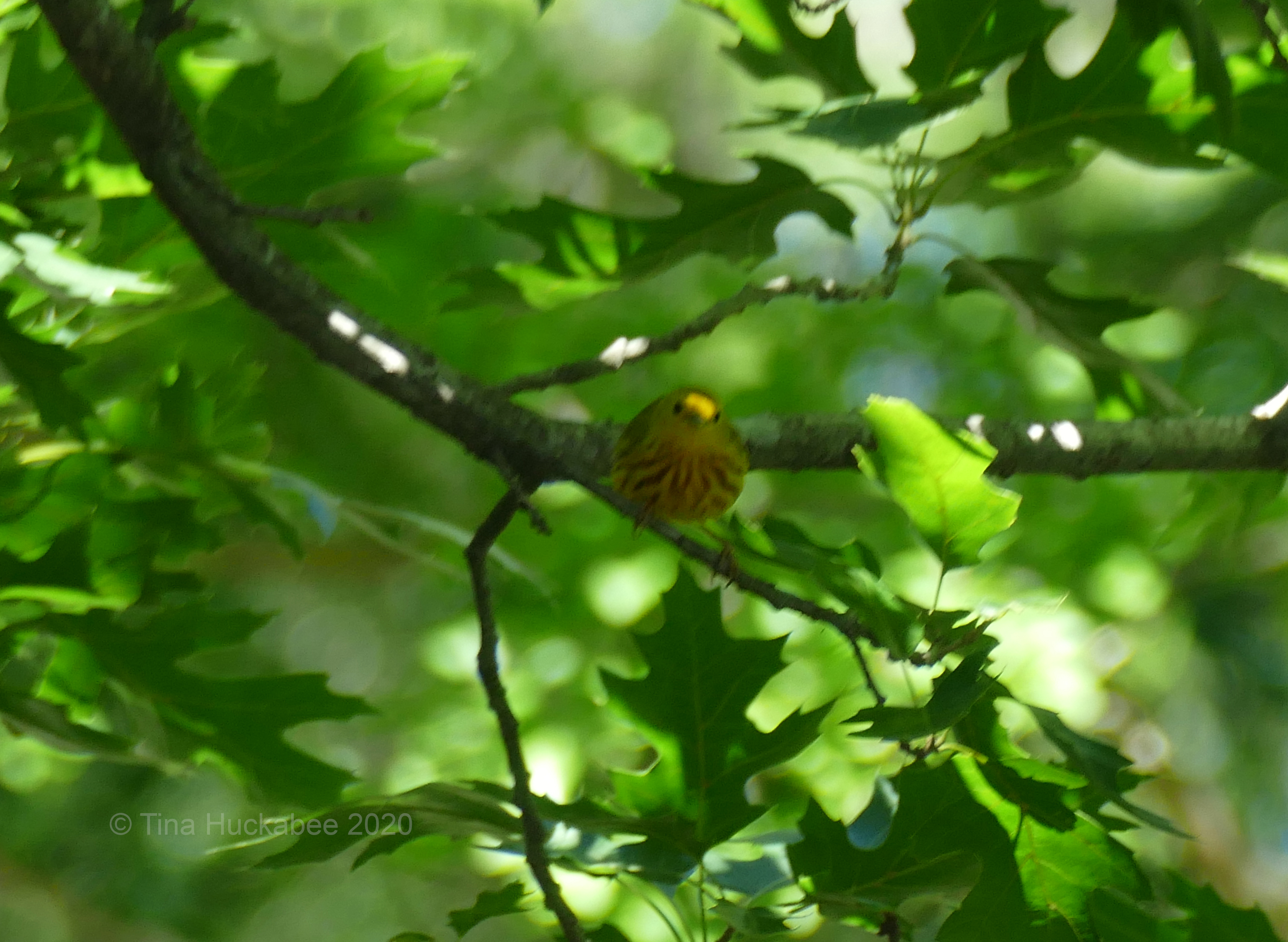
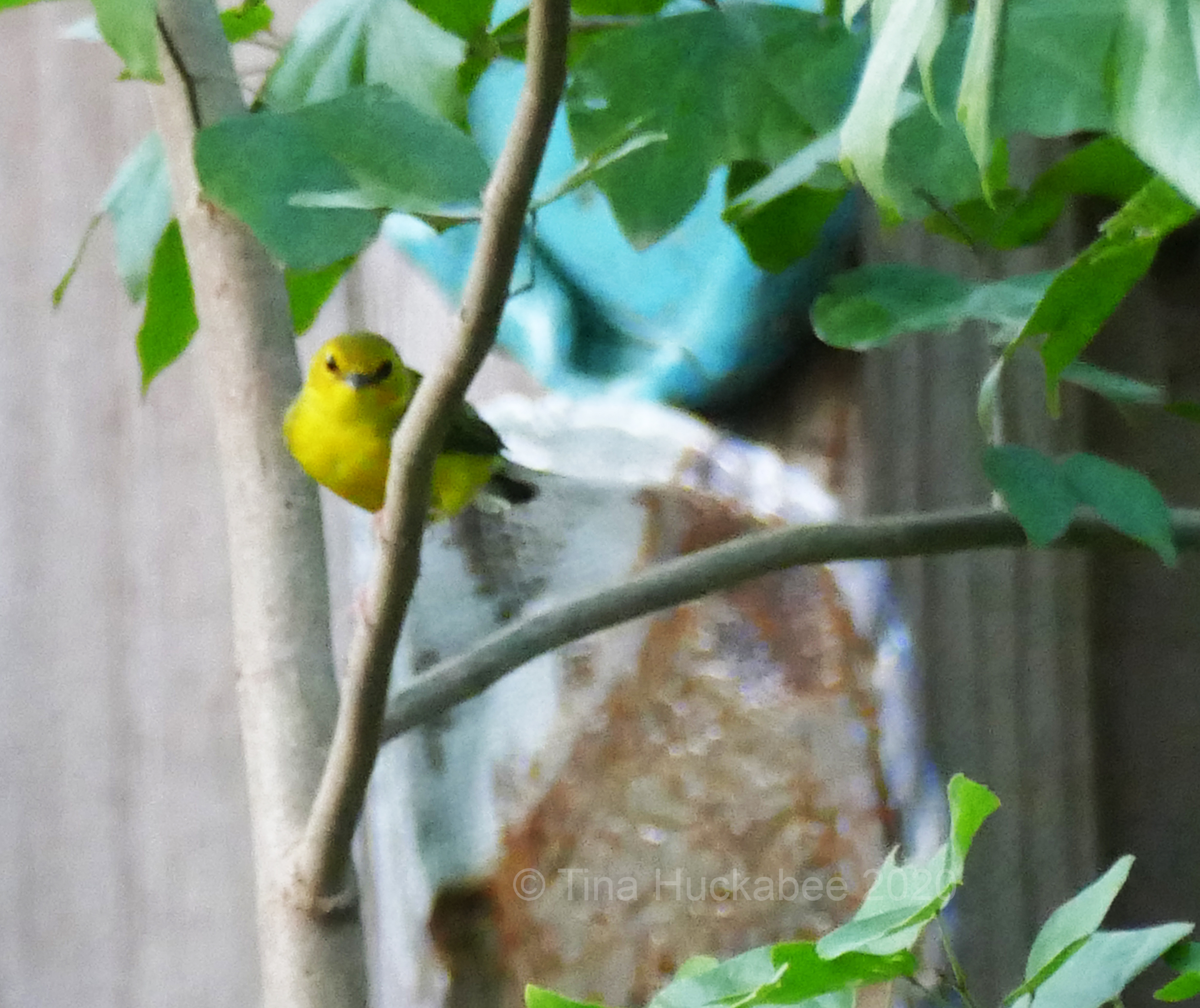
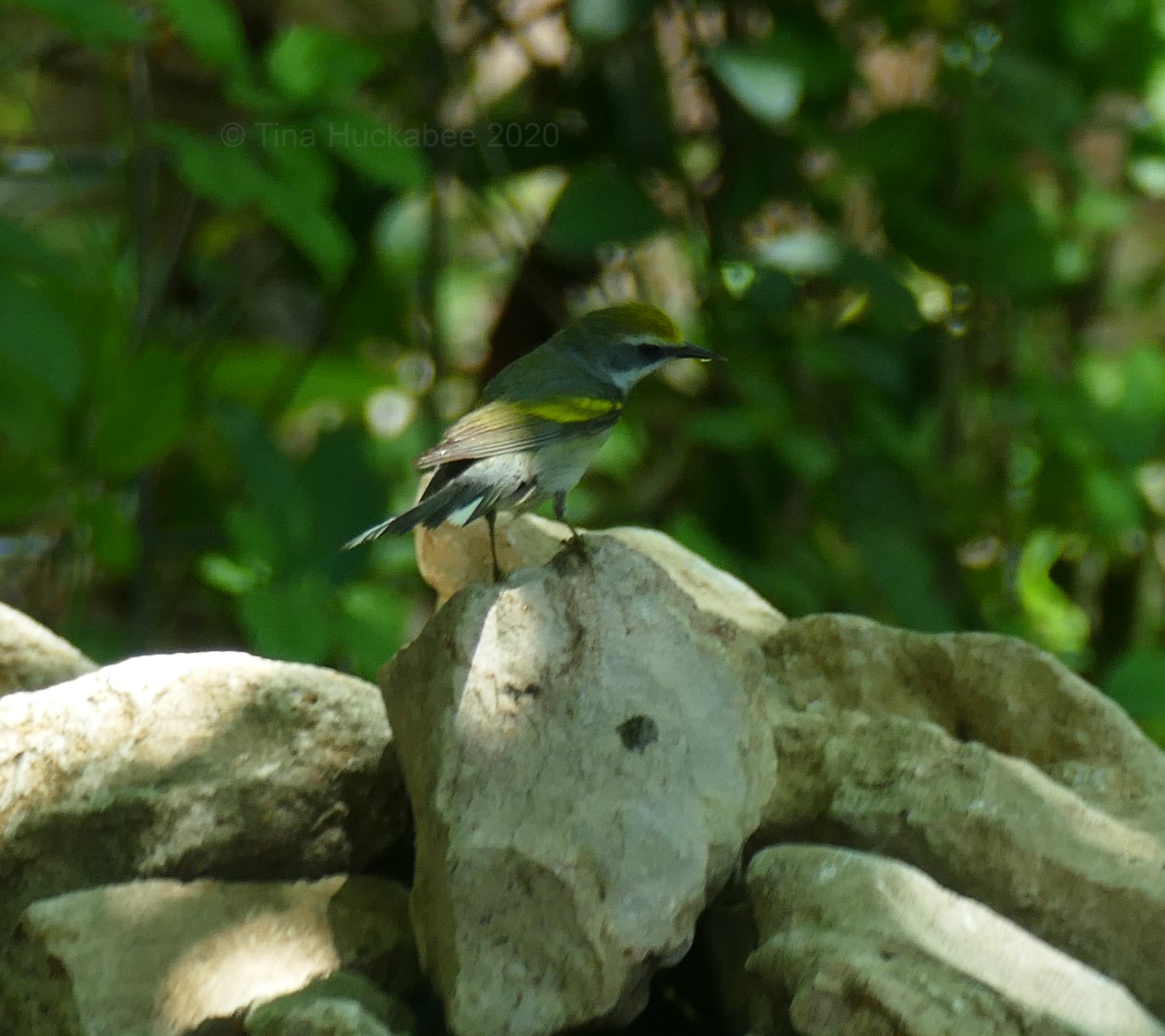
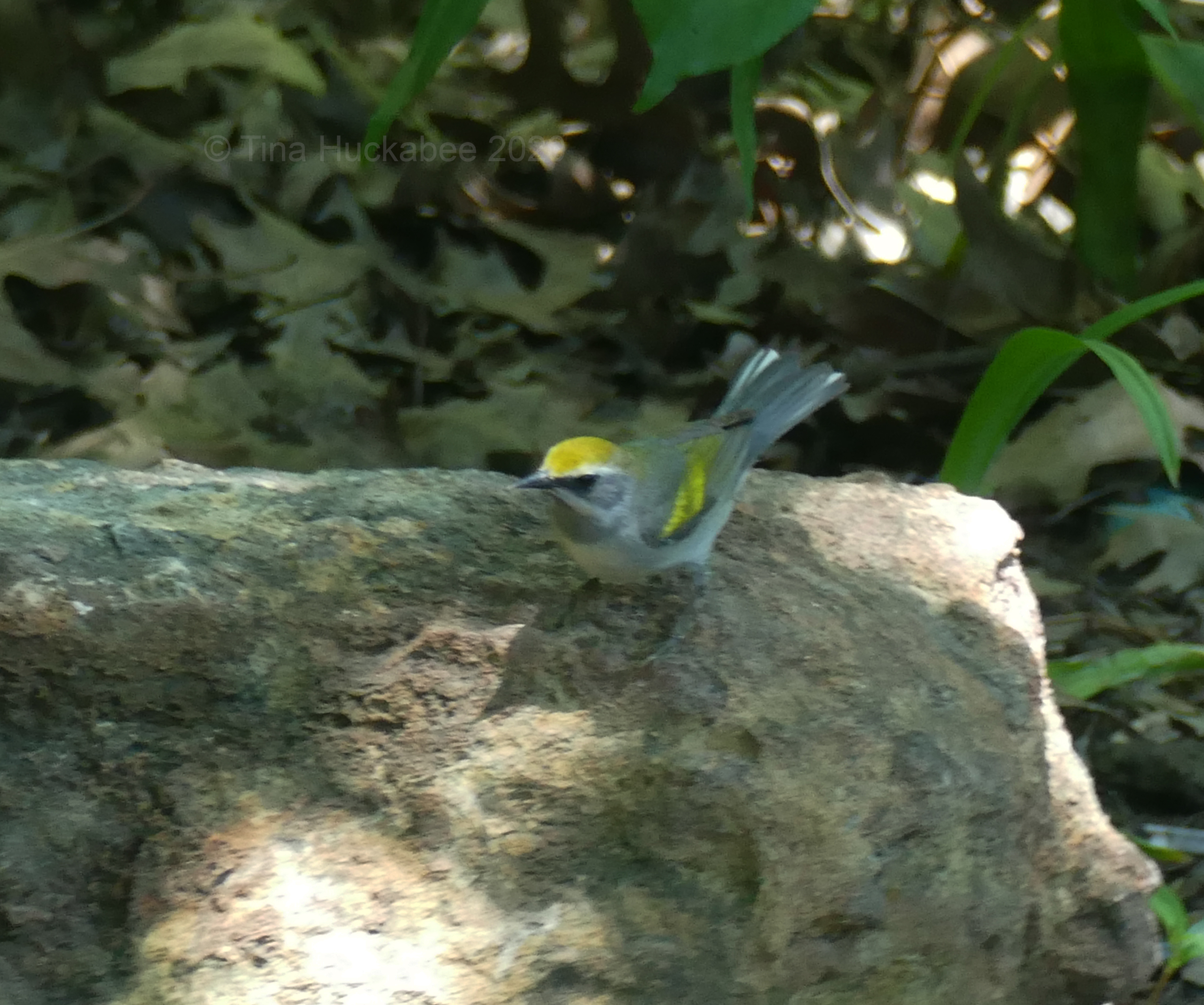
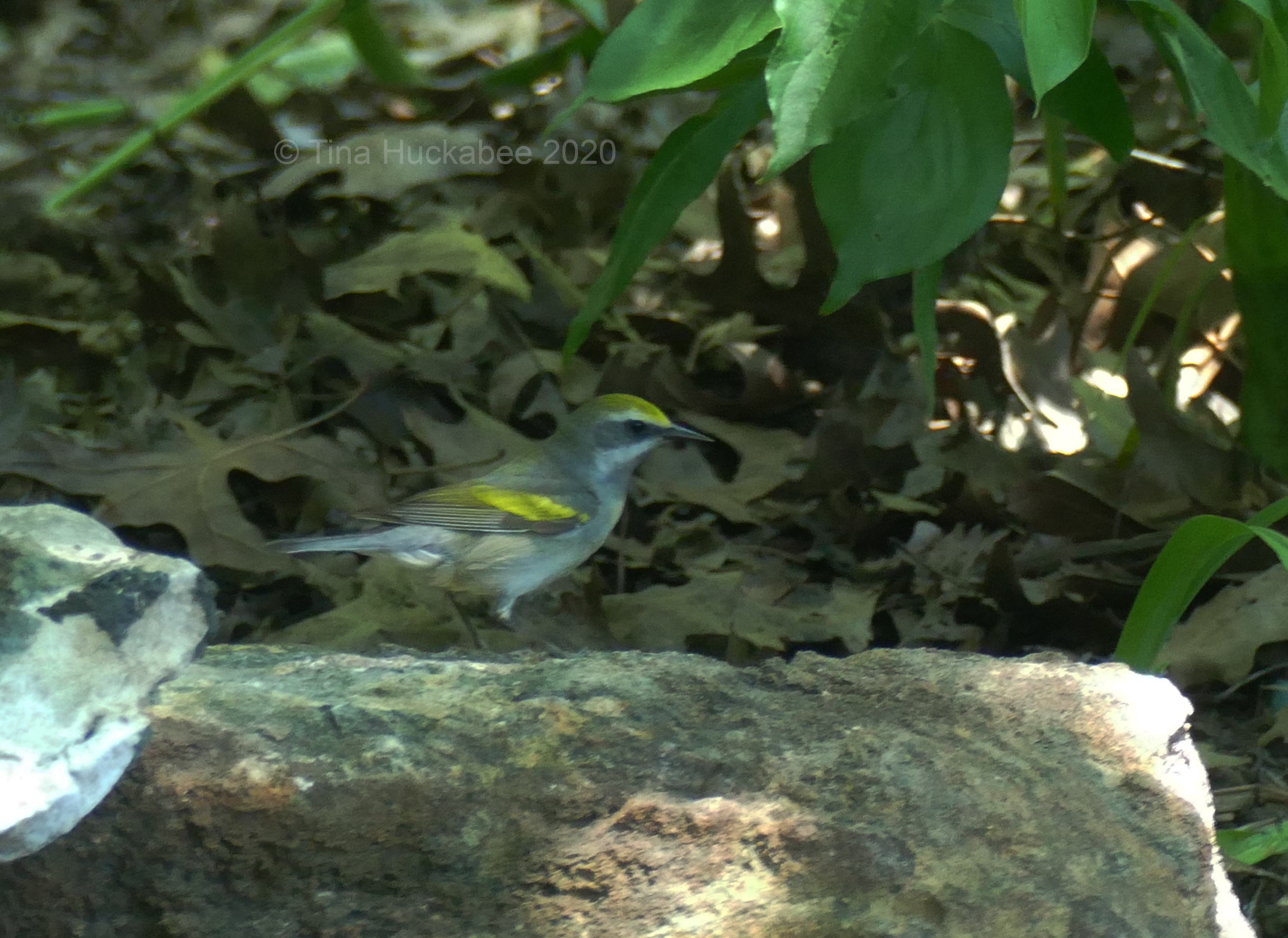
So amazing! And I think that orange female summer tanager is my favorite
LikeLiked by 1 person
It’s be a fun few weeks and I agree, she’s a winner.
LikeLiked by 1 person
What a wonderful post! Thank you for sharing “your” birds with us this spring – you’ve had some stunners. I hope you see many more before spring migration wraps up.
LikeLiked by 1 person
Thanks, Maggie and I hope I see more too, but it’s been quiet on the migratory front these past few days. I hope things pick up again.
LikeLike
I am so jealous of your bunting. I would love to see one. I have a male summer tanager that has been here for a few weeks. He circles around my yard calling loudly. I don’t know if he is calling for a mate or protecting his territory. Maybe you know. I do believe they nest here every year.
LikeLiked by 1 person
The views of buntings are so quick and fleeting. I wish they stayed around just a little longer, but I’m grateful for their presence. Nice that you have the male tanager; they’re such fun birds to watch.
LikeLiked by 1 person
I can see the appeal of the Painted Bunting, but my favorite was your little bee-huntingTanager. Such personality! Love your photos of the abundance of birds, and your cheerful commentary, Tina! Maybe one day, I too will learn to tell different birds apart.
LikeLiked by 1 person
I agree, she’s just so engaging and so full of personality. I haven’t seen any of the tanagers now for about three days and I’m guessing they’ve moved on. It’s only about two weeks that I get to enjoy their antics.
LikeLiked by 1 person
I remember the first time I spotted a Painted Bunting, I had thought someone’s pet had escaped.
My husband spotted a bird this week that I told him was a Painted Bunting based on his description, but he kept digging and discovered he’d actually seen an Indigo Bunting. Lucky duck!
LikeLiked by 2 people
You never forget your first. 🙂 As for the Indigo, that’s a real score!! They’re around here, I’m not 100% sure I’ve seen one, but 30-some-odd years ago, I remember seeing a couple of blue birds in my back yard. I had no garden then, except for the hybrid roses and irises that the came with the house. I imagine they were Indigo Buntings, but I don’t know for sure. Tell him I’m jealous.
LikeLiked by 1 person
He thanked you and said to come chill in our backyard if you want 🙂
LikeLike
No that I wouldn’t enjoy your company, but is there a guarantee of an Indigo? 🙂
Do you live in or near native woodlands, like oaks and such? I suspect my garden is too urban. I think my SIL saw them at her condo, which is not far from Bright leaf Preserve, so she lived near a large area of green space.
Still, if Painted Buntings can visit me, why not Indigos?
LikeLike
Oh, my! I was feeling all jealous of your birds, and then you said you weren’t sure you’d seen an indigo bunting, and — I have! One showed up at my feeders. More correctly, it showed up under the feeders in the shrubbery, which made any sort of photo hard, but here he is. I saw him only once, and would have missed him had I not come home for lunch that day. I was on my way out the door when I remembered something I needed. I came back in, glanced out the window, and grabbed the camera! I got about two dozen photos, but most of them showed only the beak or a tail feather or a foot. They sure are active little things!
LikeLiked by 2 people
Bested again! Haha–I’m very happy you saw an Indigo Bunting and only a little jealous! I think they’re somewhat more common in the eastern part of the state? I’ll have to check that out. I would love to see one, or many, but I’m happy with what has come through so far. That said, I haven’t seen any migratory birds for almost a week, save some tiny, flitty thing in the tree that I couldn’t identify. I do hope migration picks up some.
Are any of your photos of the Indigo worthy of a post? I love to see that!
Somehow, I missed your link to the bunting! Thanks so much for that. Oooh, that color!
LikeLiked by 1 person
I wish I had a post-worthy photo of the bunting, but what you see is the best of the bunch. It’s enough for looking and remembering, though, so there’s that!
I don’t follow birding enough to know, but I wonder if I see so few migrants because, after their fallout on Galveston Island, they fly right over me on their way inland. All of the birding hot spots around here are along the coast, or a very few miles inland.
LikeLiked by 2 people
That makes a lot of sense. I don’t know quite where you live, but it’s perplexing how they choose their pathways.
LikeLike
Oh wow, your Painted Bunting shots are amazing. I’ve only seen them once in my garden and it was long ago. The photos were too blurry. A friend told me of observing the bird on a trip to Enchanted Rock when she was about eight and trying to describe it to her dad who insisted no such bird exists!
My observations for May:
https://rockoakdeer.blogspot.com/2020/05/wildlife-wednesday-may-2020.html
LikeLiked by 1 person
That’s a funny story, but they do seem like fantasy birds. So tropical and most people don’t associate that with Texas, or with migratory birds.
LikeLike
A very nice post with accompanying data and commentary. All the pics are lovey and I do love the Lincoln sparrow and the female tanager. I have had the Lincoln sparrow overwinter on my one acre. This little beauty mixes in with the juncos and the white throats and are here or have been for years. When I was an active birder we always counted Lincolns on the Christmas bird count. None the less, if you will put out some oranges you will be more likely see tanagers and oriels. Cut the orange in half and put it through a sharp object. You could hang the orange halves near a feeder or attach a couple to your fence. If you are not a member of Texas Birds (I think that is the name) do go over to FB- if you would like seeing some really spectacular photos of Texas birds. I really enjoy the site and I bet you’d enjoy posting some of your finds.
LikeLiked by 1 person
Yes, I’m quite familiar with Birds of Texas and have learned to identify and follow migratory patterns by observing where birds are, vis-a-vis, migration. I have placed out oranges, though with mixed success. The orioles do come through, but not consistently. Summer Tanagers always visit (for the bees) but only briefly.
LikeLiked by 1 person
The name of the FB site is Birds of Texas. Many post of Painted and Indigo buntings, tanagers, orioles, owls- you name it- the pics are from all over Texas.. It’s a great site if you are on FB.
LikeLiked by 1 person
I really love the painted bunting, reminds me of our rainbow lorikeets here in Australia with all the bright colours. And it’s great to see so many spring visitors to your garden while it’s getting dark and cold down under. 🙂
LikeLiked by 1 person
Yes, both are wildly colorful. Your spring will return in due course–hang in there!
LikeLiked by 1 person
There are plenty of singers who’d like to be known as the Nashville Warbler.
LikeLike
Indeed!
LikeLike
That’s quite a showing from the colouring book! The painted bunting is a obviously a star, if a bit unrefined. I like the appearance of those Lincoln Sparrows and they are similar to our Dunnocks, but if they were all to transfer to the UK I’d probably spend most time following the Summer Tanagers with my camera.
Have fun tomorrow!
LikeLiked by 1 person
Haha, yes, that week was especially good! The Summer Tanagers are so fun to watch, I wish they’d hang around a little longer. I need to pop over to Cornell’s site and review the Global Big Day rules!!
LikeLiked by 1 person